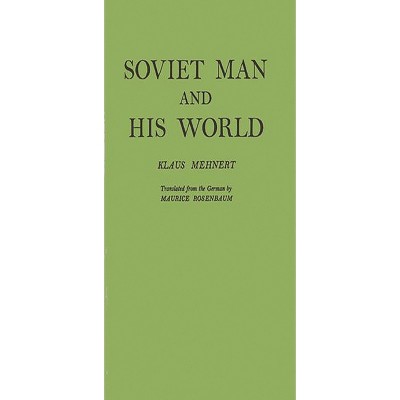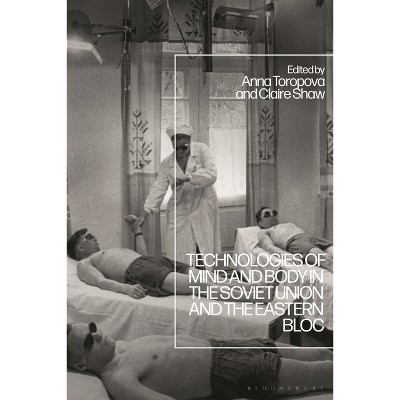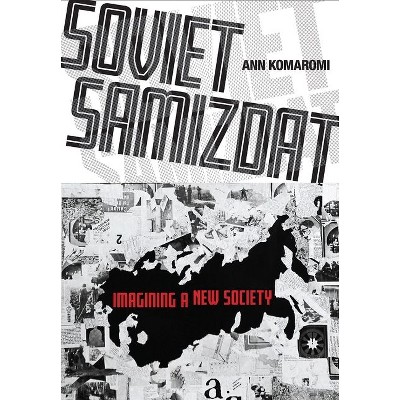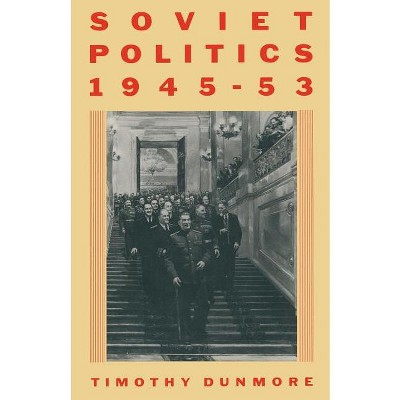The Collapse of the Soviet Empire - by George J Neimanis (Hardcover)

About this item
Highlights
- An American academic describes the breakup of the Soviet Union and the formation of an independent Latvia from the vantage point of Riga, where he was acting as an advisor to the Latvian Parliament and was a visiting faculty member at the time of the events.
- About the Author: GEORGE J. NEIMANIS is Professor and former Chair of the Department of Economics and Commerce at Niagara University.
- 160 Pages
- History, Russia & the Former Soviet Union
Description
About the Book
An American academic describes the breakup of the Soviet Union and the formation of an independent Latvia from the vantage point of Riga, where he was acting as an advisor to the Latvian Parliament and was a visiting faculty member at the time of the events. This description is unusual for several reasons--the author was based in Riga rather than Moscow or Leningrad, where most reporters lived, the work was written by someone who had access to the government, and the author was able to understand the local press and people. Background material on the Baltic countries and their relationship to the USSR is discussed.
By 1991, the Soviet system was floundering, with people spending an inordinate amount of time standing in lines to cope with shortages. The final breakdown of the Soviet empire began in the Baltic Republics, where Baltic nationalism and Russian nationalism clashed. By the end of 1991, the Baltic countries and most of the former Soviet republics had declared independence. The Soviet Union has bequeathed to the successor states an infrastructure and ethos that makes the transition to democracy and a free market extremely difficult. The work will interest those who want to learn what really happened during the breakdown of the USSR and those who need to deal with the changes that continue to occur in the successor states.
Book Synopsis
An American academic describes the breakup of the Soviet Union and the formation of an independent Latvia from the vantage point of Riga, where he was acting as an advisor to the Latvian Parliament and was a visiting faculty member at the time of the events. This description is unusual for several reasons--the author was based in Riga rather than Moscow or Leningrad, where most reporters lived, the work was written by someone who had access to the government, and the author was able to understand the local press and people. Background material on the Baltic countries and their relationship to the USSR is discussed.
By 1991, the Soviet system was floundering, with people spending an inordinate amount of time standing in lines to cope with shortages. The final breakdown of the Soviet empire began in the Baltic Republics, where Baltic nationalism and Russian nationalism clashed. By the end of 1991, the Baltic countries and most of the former Soviet republics had declared independence. The Soviet Union has bequeathed to the successor states an infrastructure and ethos that makes the transition to democracy and a free market extremely difficult. The work will interest those who want to learn what really happened during the breakdown of the USSR and those who need to deal with the changes that continue to occur in the successor states.From the Back Cover
An American academic describes the breakup of the Soviet Union and the formation of an independent Latvia from the vantage point of Riga, where he was acting as an advisor to the Latvian Parliament and was a visiting faculty member at the time of the events. This description is unusual for several reasons - the author was based in Riga rather than Moscow or Leningrad, where most reporters lived, the work was written by someone who had access to the government, and the author was able to understand the local press and people. Background material on the Baltic countries and their relationship to the USSR is discussed. The work will interest those who want to learn what really happened during the breakdown of the USSR and those who need to deal with the changes that continue to occur in the successor states.Review Quotes
?The great strengths of this book are its closeness to the events of 1991, its highly readable style, and its simple but not simplistic descriptions of the problems that brought down the USSR and those which still face the USSR's successor states....Neimanis's book fills an important need for a non-specialist, readable, jargon-free description of the agony of the USSR and the birth pains of, we hope, several democratic, progressive, and prosperous independent states. It should be recommended to anyone wanting to learn more about those days or to understand how the present situation in the Baltic states and Russia came to be.?-Journal of Baltic Studies
"The great strengths of this book are its closeness to the events of 1991, its highly readable style, and its simple but not simplistic descriptions of the problems that brought down the USSR and those which still face the USSR's successor states....Neimanis's book fills an important need for a non-specialist, readable, jargon-free description of the agony of the USSR and the birth pains of, we hope, several democratic, progressive, and prosperous independent states. It should be recommended to anyone wanting to learn more about those days or to understand how the present situation in the Baltic states and Russia came to be."-Journal of Baltic Studies
About the Author
GEORGE J. NEIMANIS is Professor and former Chair of the Department of Economics and Commerce at Niagara University./e He served as an advisor to the Latvian Parliament and as a visiting faculty member at the Riga Business School.










